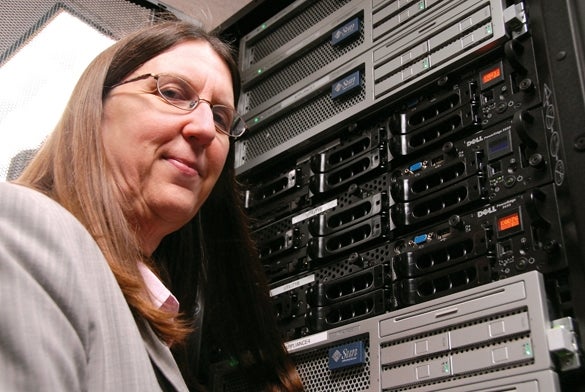When the typical office gets new computers, there are certainly some growing pains involved. Interfaces don’t appear the same, files aren’t where they used to be. It takes a couple of days to get used to all the changes.
For hospitals adopting electronic medical records systems, the situation is far more complex and potentially frustrating and counterproductive.
That’s why Worcester Polytechnic Institute Department of Management Professor Diane M. Strong has undertaken a project to establish the single best way to introduce an electronic medical records system to a health care organization and to maintain it once underway.
Strong received a $749,985 grant from the National Science Foundation to carry out a three-year study, which is being done at four different health care organizations in three countries. Locally, the study will be carried out at the UMass Memorial Medical Center and Fallon Clinic in Worcester.
Ideally, implementing electronic medical records, or EMR, systems will allow for higher-quality health care to be delivered at lower costs. But Strong warns that “EMR has to be integrated into the organization. No IT system yields benefits in isolation nor does it yield immediate benefits.”
For three years, Strong will track the use of different EMR systems at different primary care facilities operated under different management models.
Strong said that at the end of the study, she hopes to be able to develop new ideas and concepts for health care delivery, including better ways to organize workflow in order to take maximum advantage of EMR systems. She said the study will also determine whether there is a single best way for health care organizations to use EMR systems or if “best practices” differ depending on circumstances.
“Business organizations have learned to use computer systems effectively, and as a result, we produce higher quality products at lower costs,” Strong said. “Health care, however, is different because every patient is unique” because patients and health care delivery defy standardization.
One of the main questions in Strong’s study will be: How much standardization is appropriate in the health care delivery process?
Girish Kumar Navani, CEO and cofounder of EMR giant eClinical Works in Westborough, said EMR systems are becoming more complex and flexible, but the change doesn’t have to traumatic for health care organizations.
The systems don’t simply automate health care, they can allow an office to keep in touch with patients for the continuing care of chronic illnesses and remind those patients of instructions. That requires more sophisticated changes in operating procedure.
To get comfortable with those more sophisticated aspects of EMR systems, doctors must first get comfortable using the computer to document patient visits and coordinate information sharing within the office, Navani said. After that, doctors can figure out how to communicate with patients electronically, sometimes through a web portal. “Surprisingly, the later is actually easier to overcome than the former,” he said.
And hospitals don’t need to change everything about their workflow all at once, Navani said.
Good software should accommodate the old workflow, giving health care organizations time to change procedures and become more efficient.
“I think the whole thing that you have to transform your whole office before you implement technology is sort of a fallacy,” he said.
But that transformation is coming, and if an organization isn’t prepared for it, or manages it improperly, an EMR system can be more trouble than it’s worth.
Dr. Tom Sullivan, a Danvers cardiologist and former president of the Massachusetts Medical Society who works on electronic medical records issues said, “The fact of the matter is if you don’t change your work processes you’ll end up tremendously decreasing your productivity. It’s absolutely imperative if you’re going to get the benefits… of implementing electronic medical records you have to change your office workflow.”
Sullivan said productivity generally falls when introducing EMRs. The systems take time to make their benefits apparent – a couple of months for small practices or a year for a multi-specialty clinic with multiple locations.
“It’s a very, very big change for most physicians,” Sullivan said. “It requires a lot of planning. The biggest barrier to most physicians is not the lack of desire to use these new tools. It’s the cost and the fact that most of the really good systems are very, very expensive.”
Examining The Results
Strong said her study isn’t simply observing and reporting on the use of EMR systems. Extensive interviews of physicians and administrators are being conducted at hospitals in the study and the hospitals themselves are playing a very large role in Strong’s conclusions.
And while Strong won’t share the actual conclusions of her study with the hospitals themselves, she needs the hospitals “to be sure that any conclusions drawn make sense in a health care context.”
The study is an ambitious mix of WPI’s IT, process engineering, and management expertise with hospitals’ medical IT and process expertise.
The results, Strong said, should be a set of best practices for using EMR systems.
“We could not do this without their medical expertise,” she said.
The hospitals are also providing Strong with data on quality of care, patient satisfaction and various other measures that Strong hopes will be useful in assessing how EMR systems contribute to improving quality of care.

